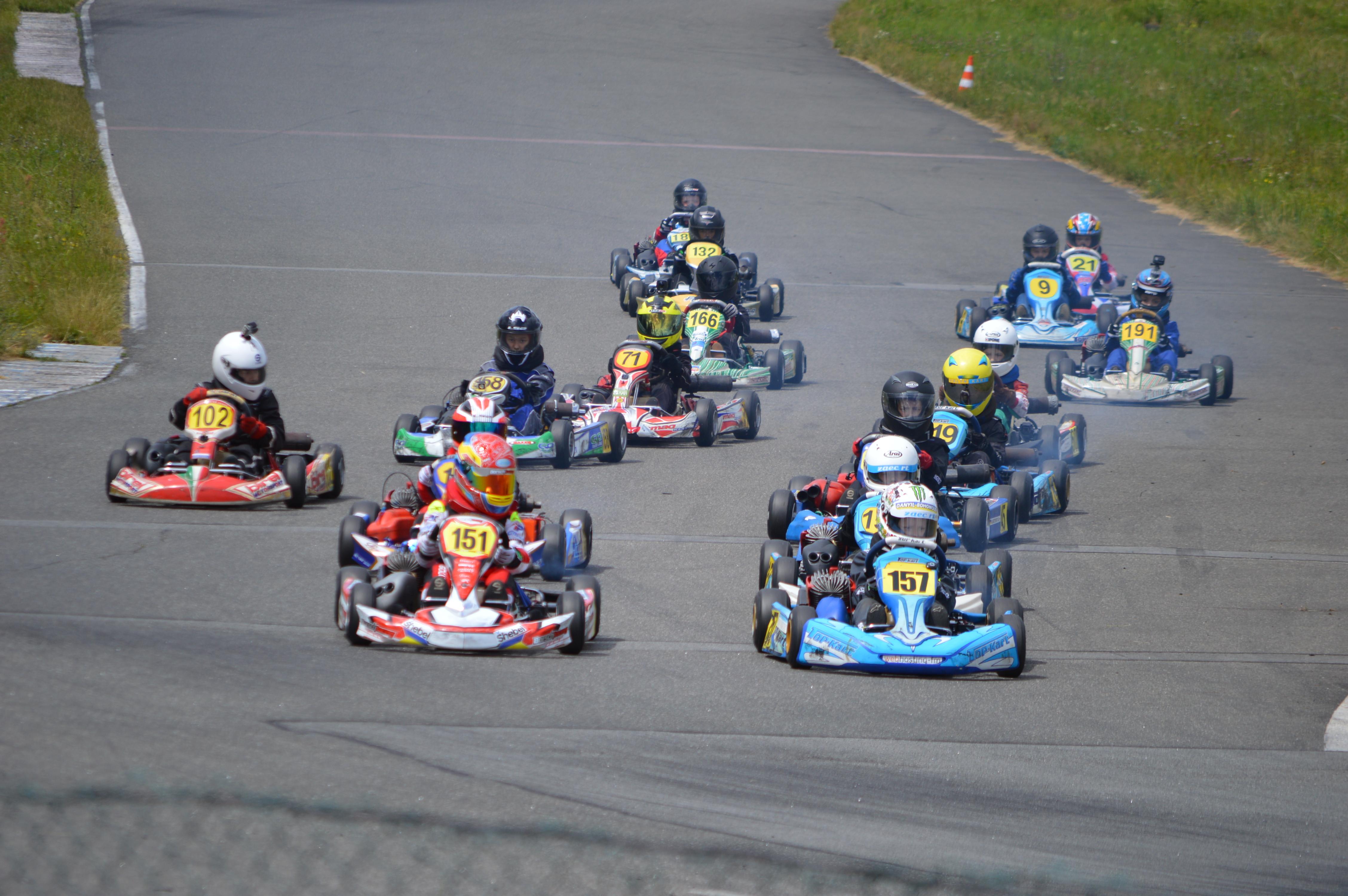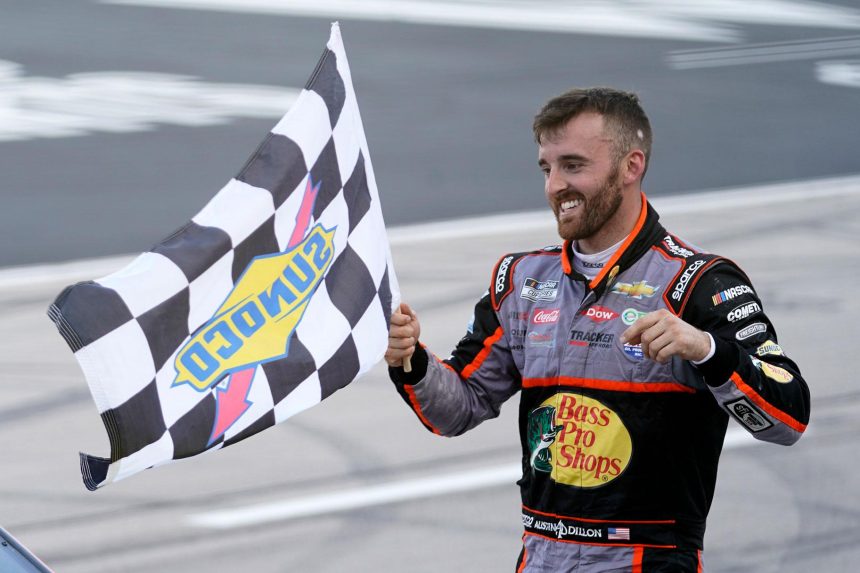Have you ever watched a NASCAR race and felt the adrenaline rush as cars zoom by at breakneck speeds? The thrill of the track, the roar of the engines, and the smell of burning rubber can ignite a passion for racing in anyone. If you’ve ever dreamed of trading in your regular vehicle for a high-performance stock car and hitting the circuit, you’re not alone! Becoming a NASCAR driver may seem like a distant fantasy, but with the right guidance, determination, and a dash of speed, it can become a reality.
In this friendly step-by-step guide, we’ll walk you through the essential steps to kickstart your journey toward becoming a NASCAR driver. From honing your racing skills to navigating the world of motorsport, we’ll provide you with the insights and tips you need to get on the fast track to success. Buckle up—your adventure awaits!
Table of Contents
- Understanding the Basics of NASCAR Racing and Its Requirements
- Building Your Skills: From Karting to Late Model Racing
- Navigating the Path to Licensing and Sponsorship Opportunities
- Preparing for the Big Leagues: Training, Networking, and Beyond
- Q&A
- Wrapping Up
Understanding the Basics of NASCAR Racing and Its Requirements
NASCAR racing is an exhilarating sport that combines speed, strategy, and skill. To thrive in this competitive arena, aspiring drivers must grasp the essential elements that govern the sport. This includes understanding the different types of racing series, such as the Monster Energy NASCAR Cup Series, where the best-of-the-best showcase their talents on iconic tracks. Familiarity with both oval and road course racing is crucial, as each presents unique challenges and requires distinct driving techniques. Additionally, knowledge of car specifications, safety regulations, and the role of pit crews can greatly enhance a driver’s performance.
Becoming a NASCAR driver involves fulfilling specific requirements beyond just mastering driving skills. Many drivers begin their journey in local go-kart leagues or entry-level racing series, gradually progressing to more competitive environments. Key requirements include:
- Age Restrictions: Most series have age limits, typically starting from 16 years old.
- Licensing: Obtaining a NASCAR license is essential, which requires passing both written and driving tests.
- Sponsorship: Financial backing is vital, as racing expenses can be considerable.
Below is a brief comparison of various racing series to help you decide where to start:
| Series | Entry Level | Approximate Cost |
|---|---|---|
| Bandolero | Beginner (8-14 years) | $5,000 – $10,000 |
| Legend Cars | Intermediate (12+ years) | $15,000 – $25,000 |
| NASCAR Whelen Modified Tour | Advanced | $30,000 - $50,000 |

Building Your Skills: From Karting to Late Model Racing
Transitioning from karting to late model racing is an essential step in a NASCAR driver’s journey. Karting provides invaluable experience in vehicle control, racing lines, and understanding racecraft. To build upon these foundations, consider the following strategies:
- Participate in Local Late Model Races: Start by entering local leagues or series that feature late model cars to gain hands-on experience.
- Network with Established Drivers: Build relationships with experienced racers who can offer guidance and mentorship.
- Invest in Driver Coaching: Hire a coach who specializes in late model racing to refine your skills and technique.
Additionally, understanding the mechanics of late model cars is crucial for a driver’s success. Familiarize yourself with the following areas:
| Component | Importance |
|---|---|
| Chassis Setup | Critical for handling and performance on various track types. |
| Engine Performance | Directly affects speed and power; understanding tuning is key. |
| Tires | Knowledge of tire degradation and grip is essential for race strategy. |

Navigating the Path to Licensing and Sponsorship Opportunities
As you progress on your journey to becoming a NASCAR driver, understanding the landscape of licensing and sponsorship is crucial for your success. Start by focusing on obtaining the appropriate racing licenses from governing bodies such as NASCAR. This process usually involves gaining experience in lower-tier racing series, where you can hone your skills and build a reputable racing resume. Once you’ve secured your license, you can explore various sponsorship opportunities to help fund your journey. Establishing a strong personal brand is key; consider creating a professional website and active social media profiles to showcase your racing experiences and engage potential sponsors.
When seeking sponsorships, it’s essential to understand what companies look for in a partnership. Here are some vital aspects to keep in mind:
- Performance Metrics: Highlight your racing achievements and statistics.
- Brand Alignment: Target companies that resonate with your image and values.
- Proposal Presentation: Prepare an engaging pitch that outlines the benefits of sponsoring you.
Networking will also play a significant role in obtaining sponsorships. Attend racing events, trade shows, and local business gatherings to connect with potential sponsors. A well-crafted table summarizing key sponsorship benefits can also be an effective tool:
| Sponsorship Benefit | Description |
|---|---|
| Brand Visibility | Increased exposure through car decals and branded gear during races. |
| Targeted Audience | Access to a dedicated fan base that aligns with their market. |
| Community Engagement | Opportunities for brand involvement in local racing initiatives and events. |
Preparing for the Big Leagues: Training, Networking, and Beyond
Transitioning to the big leagues of NASCAR requires more than just skill behind the wheel; it demands rigorous training and the right connections. Commit to a structured training regimen that includes physical fitness, reaction time drills, and driving simulations. Creating a well-rounded fitness plan can enhance your endurance and agility on the track, ensuring you can withstand the demands of racing at high speeds. Consider adding activities such as:
- Cardiovascular workouts: Running, cycling, and swimming help build stamina.
- Strength training: Focus on core and upper body strength to withstand G-forces.
- Flexibility exercises: Yoga or Pilates can improve agility and reduce injury risk.
- Sim racing: Use racing simulators to hone your skills and learn track layouts.
Networking plays a crucial role in advancing your racing career. Attend motorsport events, join local racing clubs, and engage with fellow racers and industry professionals. Building relationships with sponsors, team owners, and mentors can open doors to critical opportunities. Don’t overlook the importance of social media; platforms like Twitter and Instagram allow you to showcase your journey and connect with fans and professionals alike. Consider the following strategies:
- Volunteer at races: Gain experience and meet key industry figures.
- Participate in racing forums: Engage with the community and seek advice.
- Attend workshops and seminars: Learn about the business side of racing.
- Maintain an online presence: Share your experiences and skills regularly.
Q&A
Q&A: How to Become a NASCAR Driver – A Step-by-Step Guide to the Track
Q1: What is the first step to becoming a NASCAR driver?
A1: The first step is to gain a passion for racing and familiarize yourself with the sport. Start by attending local races, watching NASCAR events on television, and learning about the history and rules of the sport. Consider enrolling in a karting program or a local racing school to experience driving on a track.
Q2: Do I need formal training to become a NASCAR driver?
A2: While formal training isn’t strictly necessary, it can be incredibly beneficial. Consider taking racing classes or attending a racing school where you’ll receive professional instruction. Programs often include hands-on experience with race cars and valuable lessons on driving techniques and race strategy.
Q3: How can I gain experience in racing?
A3: Gaining experience can start with go-karting, which is a common entry point for many professional drivers. Compete in local go-kart races to develop your skills. Once you feel confident, you can transition to amateur racing series or local dirt track events. Building a solid foundation in various types of racing can enhance your skill set.
Q4: What types of licenses do I need to compete in NASCAR?
A4: To compete in NASCAR-sanctioned events, you’ll need a NASCAR license, which requires you to meet certain criteria, including racing experience and performance in preliminary series. Start by obtaining a local racing license by participating in smaller regional racing organizations before working your way up.
Q5: Is it necessary to have financial backing to become a NASCAR driver?
A5: Yes, racing can be a costly endeavor due to expenses such as car maintenance, travel, and entry fees. While some drivers secure sponsorships or funding from family, others build their careers through race teams that can help cover costs. Networking and dedicating time to building relationships within the sport can open doors to financial support.
Q6: How important is physical fitness in NASCAR driving?
A6: Physical fitness is extremely important for NASCAR drivers. Racing requires strength, endurance, and excellent reflexes. Drivers often undergo rigorous fitness regimes, focusing on cardiovascular health, strength training, and flexibility exercises to prepare for the physical demands of racing.
Q7: What role does networking play in becoming a NASCAR driver?
A7: Networking is crucial in the racing community. Building relationships with other drivers, sponsors, team owners, and industry professionals can lead to opportunities for funding, mentorship, and potential rides. Attend racing events, engage on social media, and consider joining racing clubs to expand your connections.
Q8: Are there any specific racing series to focus on before entering NASCAR?
A8: Yes, aspiring NASCAR drivers often start in series such as Legend Cars, Late Models, or ARCA (Automobile Racing Club of America). These series provide the chance to race in front of teams and sponsors, gain valuable experience, and demonstrate your driving skills to progress toward NASCAR’s top tier.
Q9: What should I do to stay motivated while pursuing a racing career?
A9: Staying motivated can be challenging, but surrounding yourself with supportive people, continuously setting achievable goals, and celebrating small victories can help. Stay committed to your training, learn from your experiences, and remember that persistence and passion are key ingredients for success in racing.
Q10: What advice would you give to someone just starting their journey toward becoming a NASCAR driver?
A10: Follow your passion, stay dedicated, and be open to learning. Embrace every opportunity to drive, whether that means participating in local races or attending racing schools. Don’t get discouraged by setbacks, and remember that most successful drivers have faced challenges along the way. Stay focused, build your skills, and enjoy the ride!
This guide aims to provide a friendly and informative overview for anyone aspiring to become a NASCAR driver. The journey is demanding, but with determination and passion, it can also be incredibly rewarding!
Wrapping Up
As we reach the finish line of our journey through the world of NASCAR, we hope this guide has equipped you with the knowledge and inspiration to pursue your dream of becoming a NASCAR driver. Remember, the path to the track is not just about speed and skill; it’s also about dedication, resilience, and a passion for racing. Whether you’re hitting the local karting circuit, honing your skills in a racing school, or networking with industry professionals, every step you take is a step closer to your goal.
Keep your enthusiasm high, embrace every challenge, and don’t forget to enjoy the ride! The world of NASCAR is waiting for you, and with commitment and hard work, you could soon find yourself on the starting line of your own racing career. So buckle up, stay focused, and get ready to take your shot at the checkered flag. Happy racing!











